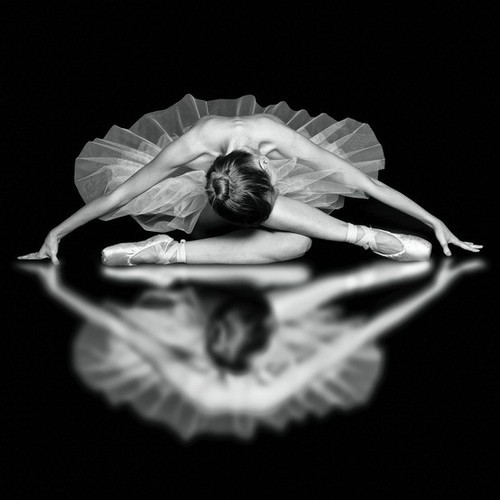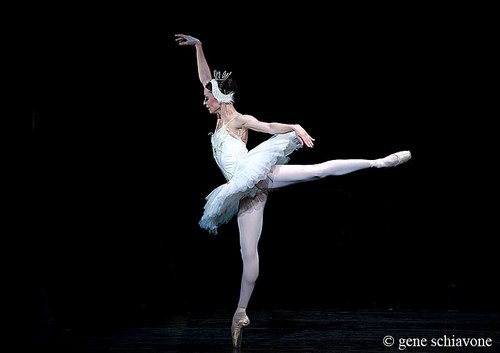
Image credit.
The middle of August marked the start of a new Fall semester of dance classes at the studio I teach at.
While a handful of dance students take during the summer, our schedule gets scaled way back (usually a welcome break for me). So the focus during the short summer break is mainly fun and maintenance.
Each year I try to decide what I want to focus on in the skill building and refined movement departments. As well as working on the basics of perfecting the various steps, how they connect to one another, balance and transitions, strength and speed, sustained movement, grace and articulation.
It won't be until about mid-October that I have to worry about setting choreography for any performance opportunities around the holidays. After we return from winter break in January I will have to put a great deal more focus into choreography for our annual show in June.
For now though, here is a list of the things I want to focus on, lest I forget as the weeks roll by. Some of them are things that can be applied to other formats that I teach in the fitness world, namely Balletone and Mat Pilates.
Cleaner and sharper arm movements.

Our arms start from the back because they were once wings.
~Martha Graham
Often, the arms are the last part of the body to settle into strong technique. And no wonder, what with all the complexities of what the legs, feet and torso must do in such a large movement vocabulary as classical ballet. Even a torso well aligned with strong legs and feet under it can struggle through many complex movements, like pirouette turns, fouette turns and arabesques. Those, as well as many other steps, can be undone by the arms. This can be due to arm movements that are not well timed, or arms that "fly out" because the muscles surrounding the rib cage have released and the muscles of the shoulders and upper back are not properly engaged.
Here is a post about shoulder stability during a leg movement.
Another post; A New Way To Think About How Limbs Are Connected.
Locking in the proper placement of the shoulder in arabesque.
Image credit.

Image credit.
Above are some beautiful examples of arabesques where the dancers' shoulders are engaged and properly placed. Clean and efficient.
Once a clean and efficient line is mastered, then a dancer can add more dramatic versions to their movement vocabularies. Always with the clean and efficient line as a home base. I like to tell my dancers, "Get the clean line. Then you have some place to go to."

Image credit.

Image credit.
More articulate footwork.
I don't promote cranking turnout through the feet (forcing the feet to be turned out more than what is realistically in the hips), because it is false turnout and very damaging to the ankles, knees, hips and back. I do promote clean foot positions. When a step is executed and finished in a clean position it usually means that the dancer has all the right muscles fired up.
Erg. The picture below is a no-no. The dancer has her feet cranked out and forced, the biggest clue being that there is a significant collapse of the insteps. I guarantee the knees are collapsed and rounded forward as well.

Some young dancers are naturally very flexible in their hips for turnout, and often they are naturally flexible through all the joints of their legs. For those students it's important for them to make the lifting up of their insteps second nature. This will help to make proper alignment through the torso, lower back and legs second nature as well.
"Don't let the glutes ruin your turnout party."
The leg has some isolated mobility inside the hip joint. You can rotate the leg inwardly and outwardly while at the same time not moving the hip, or rather, your butt. There are about six deep lateral rotator hip muscles responsible for this action, as well as other actions like adduction of the leg.
- Piriformis
- Gemellus Superior
- Obturator Internus
- Gemellus Inferior
- Obturator Externus
- Quadratus Femoris
Nobody likes a bossy bully at their party.
Adding the nuance of the head and shoulders into movements.
Most dance forms, especially ballet, are dependent upon the use of the mirror. The mirror can be a valuable tool, issues of body image aside. As a dancer becomes more and more advanced they must learn to balance the utility of the mirror versus the habit of dancing to the mirror. At a certain level of accomplishment it is not enough to save dancing past the mirror to the "fourth wall". It is something that must be practiced in the classroom as well. Many nuanced movements of the head and/or shoulders require a dancer to lose eye contact with the mirror, while upping their reliance of their peripheral sight.On a more emotional and artistic note; it can be a blessing on those days that nothings "looks" right, and to just give way to the dance. Forget the mirror!
Keep your plies like warm taffy.
I am again blessed this year to be working with a few different levels. While the studio's oldest group of dancers has quite a repertoire of jumps in their movement vocab, the groups below will be learning some new steps, including jumps. The only safe way to execute all of these jumping steps (really any jump at all), is to start with a plie and end with a plie (whether on one leg or both legs). Bending the knees is not enough when one is talking about ballet technique. The quality of the plie becomes critical. A jerky, choppy or stifled plie can make a step more difficult to execute, and more importantly, cause injury to the dancer. I have been working on the concept of likening the muscles of the legs to taffy. If you have ever seen or handled cold or frozen taffy you will know what I mean. Difficult to move and even prone to shattering. Hot taffy becomes a hot mess! The plie should be like warm taffy. Pliable yet connected. It can still be manipulated and controlled.
Image credit.
I think that's a pretty good list to start with.
Thanks for hanging out and reading. Feel free to share your thoughts. If you are interested in more from Miss Erin's DanceFit subscribe at the top of the page!
Enjoy the dance that is life!
~Erin
No comments:
Post a Comment